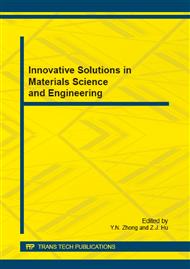p.190
p.194
p.198
p.202
p.206
p.210
p.214
p.222
p.226
Sealing Performance Analysis of Cap Seal Rings in the Stirling Engine Piston Rod
Abstract:
When the Stirling engine piston rod for reciprocating motion at a high speed under dry friction conditions, the temperature fall or pressure drop is mainly caused by uneven sealing ring deformation, increased wear and sealing performance fall. This article is introduced a cap seal rings of Stirling engine piston, study for friction and wear in theory under dynamic seal condition, and establish a rod seal test equipment to analysis the cap seal structure distortion and gauge wear in different working environments by experimental methods. Finally, come to the conclusion that when working medium pressure at 7 mpa, the cap seal performance is best.Keywords: Rod seal; cap seal structure; stress analysis
Info:
Periodical:
Pages:
206-209
Citation:
Online since:
November 2014
Authors:
Keywords:
Price:
Сopyright:
© 2015 Trans Tech Publications Ltd. All Rights Reserved
Share:
Citation:


